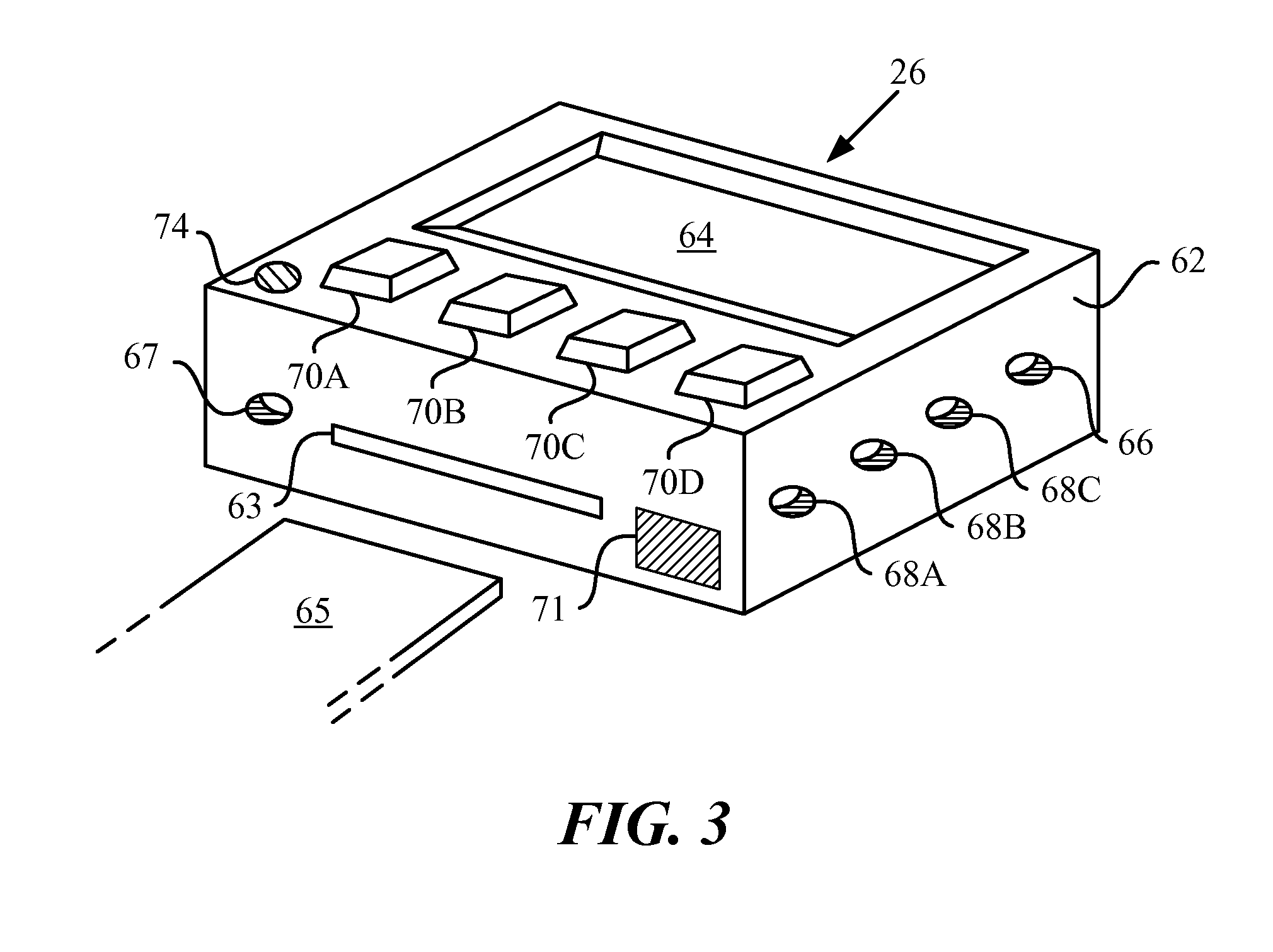Multi-user remote health monitoring system with biometrics support
a health monitoring system and multi-user technology, applied in the field of remote health monitoring systems, can solve the problems of patients not having the greatest unmet medical needs, computers are too expensive to give away, and patients do not have convenient and cost effective monitoring systems, etc., to achieve minimal hardware cost per patient, simple and inexpensive, and avoid increasing administration costs
- Summary
- Abstract
- Description
- Claims
- Application Information
AI Technical Summary
Benefits of technology
Problems solved by technology
Method used
Image
Examples
second embodiment
[0136]Script programs 40 of the second embodiment are similar to the script program shown in FIGS. 6A-6B, except that each display command is replaced by a speech synthesis command and each input command is replaced by a speech recognition command. The speech synthesis commands are executed by microcontroller 122 to synthesize queries, response choices, and prompts through speaker 72. The speech recognition commands are executed by microcontroller 122 to recognize responses 42 spoken into microphone 118.
[0137]For example, to ask the patient how he or she feels and record a response, microcontroller 122 first executes a speech synthesis command to synthesize through speaker 72“How do you feel? Please answer with one of the following responses: very bad, bad, good, or very good.” Next, microcontroller 118 executes a speech recognition command to recognize the response spoken into microphone 118. The recognized response is stored in memory 80 and subsequently transmitted to server 18. ...
third embodiment
[0139]The third embodiment also shows how the queries and statements may be customized to each individual by merging personal data with the script programs, much like a standard mail merge application. Referring to FIG. 18, personal data relating to each individual is preferably stored in look-up table 46 of database 38. By way of example, the data may include each individual's name, the name of each individual's physician, test results, appointment dates, or any other desired data. As in the preferred embodiment, database 38 also stores generic script programs 40 created by script generator 50.
[0140]Server 18 includes a data merge program 55 for merging the data stored in table 46 with generic script programs 40. Data merge program 55 is designed to retrieve selected data from table 46 and to insert the data into statements in generic script programs 40, thus creating custom script programs 41. Each custom script program 41 contains statements which are customized to an individual....
PUM
 Login to View More
Login to View More Abstract
Description
Claims
Application Information
 Login to View More
Login to View More - R&D
- Intellectual Property
- Life Sciences
- Materials
- Tech Scout
- Unparalleled Data Quality
- Higher Quality Content
- 60% Fewer Hallucinations
Browse by: Latest US Patents, China's latest patents, Technical Efficacy Thesaurus, Application Domain, Technology Topic, Popular Technical Reports.
© 2025 PatSnap. All rights reserved.Legal|Privacy policy|Modern Slavery Act Transparency Statement|Sitemap|About US| Contact US: help@patsnap.com



